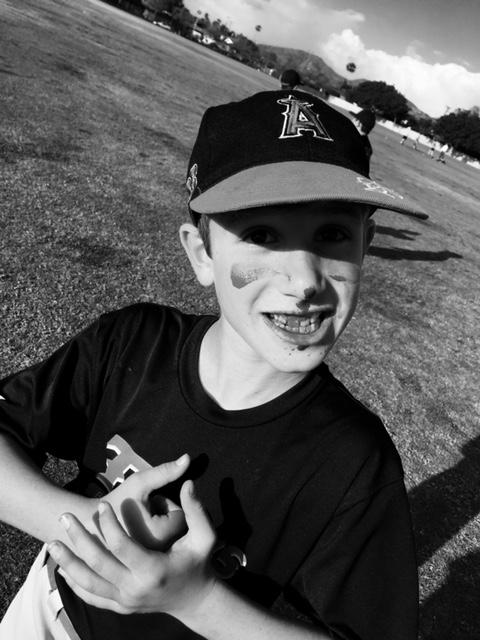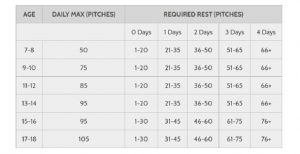Just like winning takes a full team effort, baseball safety needs players, coaches, officials and families all working together to keep kids safe.
Baseball Safety: Before Taking the Field
First and foremost, know your athletes. Kids who have medical issues (asthma, diabetes, sting allergies) can contribute best when they have action plans developed by medical providers that list key medications and how to respond to emergencies. Make sure that both action plan and medications are at all games/practices and can be easily found and put into use.
Highly recommend learning basic first aid and Cardiopulmonary Resuscitation (CPR). First aid more likely to be used on-field with players, while CPR might be more needed for spectators (grandparents?) or even in non-sports situations. Helps to have a first aid kit that is well-stocked and quick to access. Should have items such as gloves, gauze pads, and bandages. Get familiar with the contents of the first aid kid and replace anything that is used during the season.
Every practice or game, don’t forget to check out the field. Look for any rocks or holes that could cause injury or create a bad hop that goes by the shortstop in a tight game. Inspect fences for any sharp edges. Warn players about any lack of warning tracks if going for deep flies or foul balls.
Baseball Safety: Responding to an Injury
Best to have a plan in place- who will evaluate the injured player and who will stay with the rest of the players? Who is in charge of the first aid kit or calling family if they are not at the field. If 911 call needed, who makes the call and who goes into the parking lot to guide the medics to the field? Which league officials need to be notified and paperwork to be filled out?

Who will stop a nose bleed from a bad hop or find a chipped tooth from a collision at first base? (yes, same kid, same season)
Baseball Safety: Ball and Bat Control
No more terrifying sights than multiple kids swinging bats in the dugout or several balls coming to the coach who just yelled “balls in”.
All players and coaches must be aware of swinging bats and flying balls. Know how many balls are live on the field at all times. Teach kids to make sure target is ready before throwing ball.
Only one player, on the field, should be swinging a bat. This means no swinging of bats in dugout or on-deck circle in lower level baseball. Use close supervision with bat use in and around batting cages.
Batting helmets required for any kid swinging a bat, running bases, or base coaching.
Base coaches should not hesitate to move toward the dugout or down the foul line. Especially important if a strong kid who swings early/late is is up to bat.
Dugout fences should be high enough to protect players from foul balls or errant throws. Make sure all gates are shut during play.
Realize that no fence or helmet can provide full protection. Teach all players to be alert and keep eyes on the field at all time.
Baseball Safety: Teaching the Running Game
Using breakaway bases for sliding practice can help keep kids safe on the base paths. Do not encourage or allow head-first sliding in younger players. Better for shins and feet to use running shoes in place of cleats for outfield conditioning and running drills.
Baseball Safety- Concussions
A concussion is a form of traumatic brain injury that can come from a hit to the head or body, or even from a whiplash motion of the neck. Kids do not need to be “knocked out” to have a concussion. Common causes include fly balls lost in the sun, foul tips, bad hops, line drives, and collisions. Signs of a concussion may include headaches, dizziness, problems with sunlight, vomiting, or acting out of character. This is where knowing your kids is key. Any concern, any change in behavior, any sign or symptom, any doubt- sit them out with immediate removal from practice or game. Good medical advice (any many state laws) require medical evaluation and not allowing return until all signs and symptoms are gone. There is also a multi-step return to play process that can take several days to complete.
- RELATED CONTENT: Concussion Information
Baseball Safety: Warming Up, Stretching and Cooling Down
Unlike what most of us were probably taught, stretching is thought to be best done after 3-5 minute warm up running/agility drills or even at the end of practice.
- RELATED CONTENT: Warm-up Drills that All Little Leagues Should Implement
These same stretches can be used as 2 Out Stretches (thanks to Mike Nagler, Head Strength and Conditioning Coach at the University of California, Irvine for the concept!). When a batting team gets a second out, do this mini “warm-up” before taking the field for the next half inning.
Warming up to throw starts with short-toss, then long-toss with an arc, then finally longer throws on a line. This should be done before and even during games for players coming in as defensive replacements. Pitchers can do this before starting to do warm-up throws from the mound. Best not to bring in relief pitchers cold. Send relief pitchers to bullpen earlier in defensive inning or while team is batting gives them a better warm-up.
Don’t leave the field without an appropriate cool down. Using the same stretches and include light running for 3-5 minutes.
- RELATED CONTENT: Healthy Post-Game Snacks
Baseball Safety: Protecting Shoulders and Elbows
No doubt that shoulder or elbow pain is common, especially early-season when getting into shape or later when fatigue kicks in. At times seems like every player says that throwing arms are hurting. When do you determine that there is a problem that needs medical help? Ideally, there should be no pain before, during or after throwing, so no one will fault you for having a kid get seen with any type of pain. I particularly worry about any pain that can be located with just a finger-tip. Pain “all around the elbow” is one level of worry, but being able to use a finger-tip to point out exact site of pain on inside of elbow does amp up my concern.
- RELATED CONTENT: Kids Shoulder Pain: 3 Ways to Provide a Fix
Baseball Safety: Protecting Pitchers
For pitchers, pretty sure everyone is fairly familiar with pitch counts and rests days between outings. I’ll provide age-appropriate tables below as a reminder. Now, pitch counts work best if everyone is following them. May be all good that one team is monitoring pitchers, but if one kid is pitching for another team and not coming clean on tracking total pitches, then there is a risk for trouble. Keep close eyes on kids pitching for more than one team. Pitch counts aren’t the be all or end all either. Don’t be a slave to pitch counts to determine when to pull a pitcher. Kids shaking their arm, walking around the mound between pitches, dropping elbows or getting lit up are all showing fatigue. Doesn’t matter the pitch count, get that kid out before arm problems and tired outfielders show up.
Get asked a lot about what types of pitchers I worry about. Well, anything that makes a kid standout makes them also at risk. So if a pitcher sports a fastball over 80, a wicked curve, or towers in height over everyone else, then those are both blessings and curses. Can debate if a properly thrown curve is maybe not so dangerous, but in my experience, if you are good at what you do, people want to see you do it. Good pitchers will get the call early and often, and that increased exposure can create trouble if not kept under control. Taking at least 2-3 months off from pitching a year can prolong a career by keeping arms fresh.
- RELATED CONTENT: Major League Baseball Pitch Smart
Baseball Safety: Protecting Catchers
I tend to crusade for catchers. Tough position that very few want to play. Balls in dirt, foul tips, and lots of throws. Pull the pitcher and the catcher tends to stay put. Many ways to protect catchers from making sure equipment fits, moving kids around (again, make sure equipment fits) and coming out of squat to make throws. Not playing pitcher and catcher in same game a good idea as well.
- RELATED CONTENT: Protecting and Developing Young Catchers





